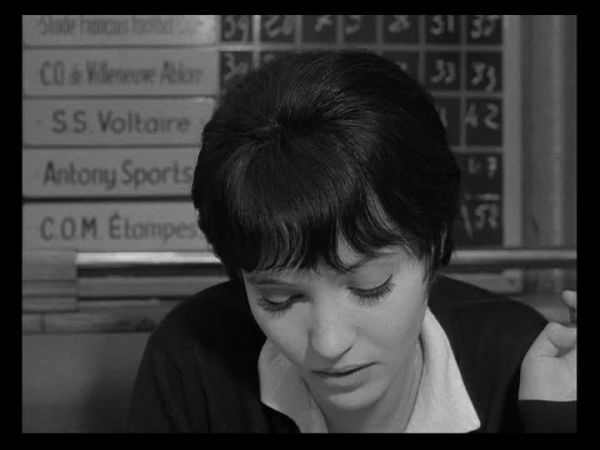JCM312/Godard and Contemporary Feminism (Discussion)
From Screenpedia
(Redirected from TCF340/Godard and Contemporary Feminism (Discussion))
Jump to navigationJump to searchMacCabe & Mulvey
- Whole class: MacCabe and Mulvey present a complicated argument about the film, Numero Deux, contending that it is primarily about "the effects of capitalism on sexual relations and the oppression of the working class..." They also link "the oppression of capitalism and the alienation of sexuality."
- How does Godard represent the economics of prostitution in Vivre sa vie? That is, how would you characterize the way that the economic activity of Nana and the other prostitutes is presented? Are they economically "oppressed"?
- How does Godard represent the sexuality of prostitution in Vivre sa vie? That is, how would you characterize the way that the sexual activity of Nana and the other prostitutes is presented? Is it "alienated"?
- You may find it useful to compare Godard's prostitute with prostitutes from other films, such as Pretty Woman.
- MacCabe and Mulvey contend, "Female nakedness carries associations of the exploitation of women that almost no degree of formal subversion can displace."
- All Groups: What do they mean by "formal subversion"? They focus on Godard's British Sounds and the scene of a woman walking up/down stairs (see screenshots). How does this scene supposedly illustrate this "subversion." Is sexuality "demystified," as MacCabe and Mulvey discuss?
- Consider the instances of "female nakedness" there are in Vivre sa vie — especially the one of the nude woman looking at the camera (see screenshots). Is there formal subversion occurring there?
- All Groups: Do you think it is possible to use a naked female body in a film in such a way that it is not exploitative? Explain, and provide an example (either from a film or hypothetical).
Godard, Brecht & Wollen
- All Groups: Describe at least three ways in which Vivre sa Vie incorporates Brechtian and/or counter-cinema techniques. What impact do these techniques have? What argument would Godard make for using them in a film such as Vivre sa Vie? In other words, what's the point?
- Start with the image of Nana looking at the camera.
- All Groups: Does Vivre sa Vie seem more "Brechtian" or more counter cinema than Breathless? Why or why not? What do you imagine a fully counter-cinema film would look and sound like? As a group, plan your own counter-cinema film and be prepared to explain it to the class.
- All Groups: Toward the end of the film, Luigi "reads" Poe's "Oval Portrait"; but the voice we hear is Godard's. What parallels are there between Poe's story and Godard's film?
- And what's with the French subtitles in that scene (see screenshot)?
Bibliography
- Brecht, Bertolt. "The Modern Theatre is the Epic Theatre." In Brecht on Theatre, pp. 33-42. Edited and translated by John Willett. New York: Hill and Wang, 1964.
- MacCabe, Colin and Mulvey, Laura. "Images of Woman, Images of Sexuality, in Godard: Images, Sounds, Politics, 79-101. Bloomington, IN: Indiana University, 1980.
- Wollen, Peter. "Godard and Counter Cinema: VENT D'EST." In Readings and Writings: Semiotic Counter-Strategies. London: Verso, 1982.



